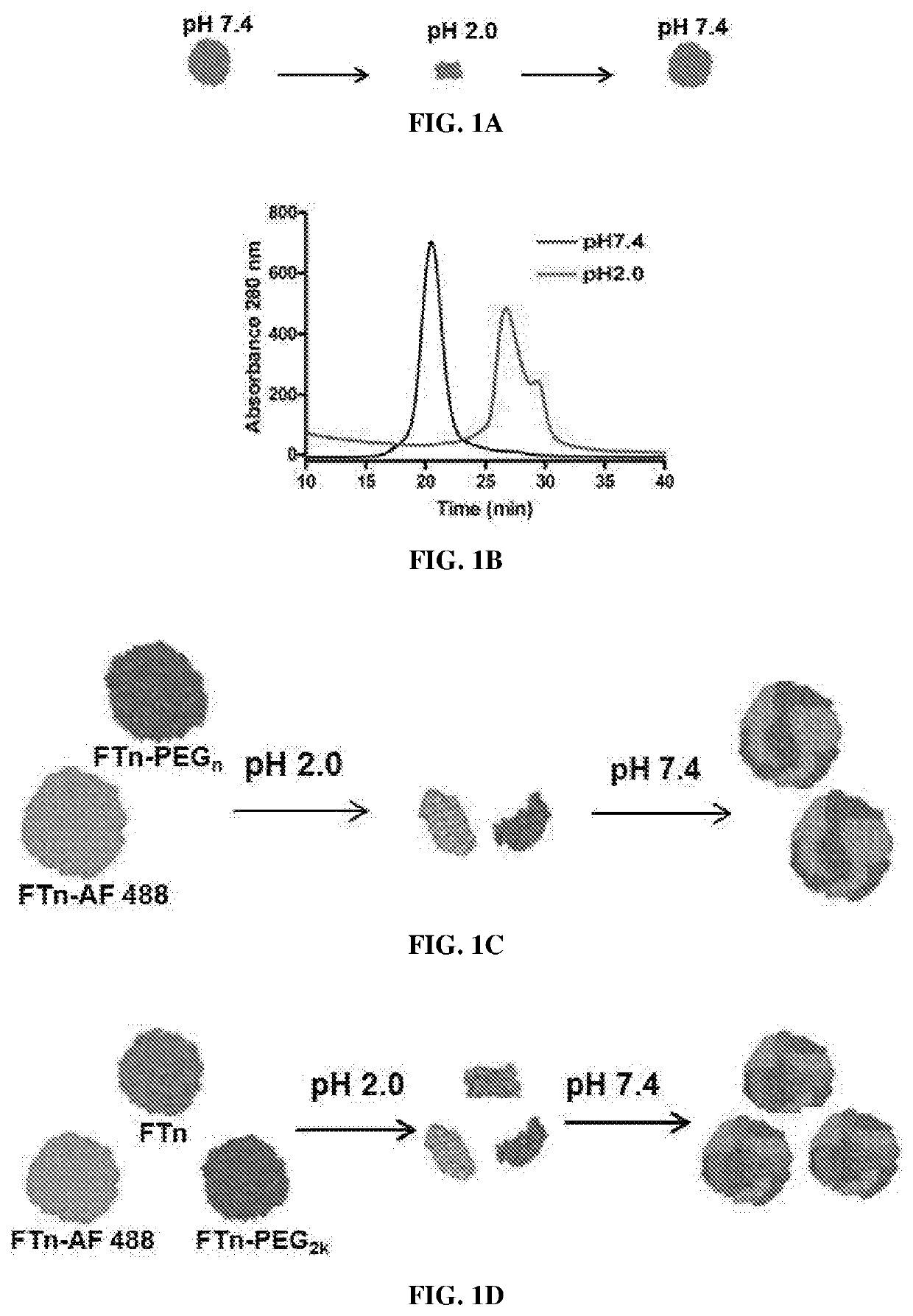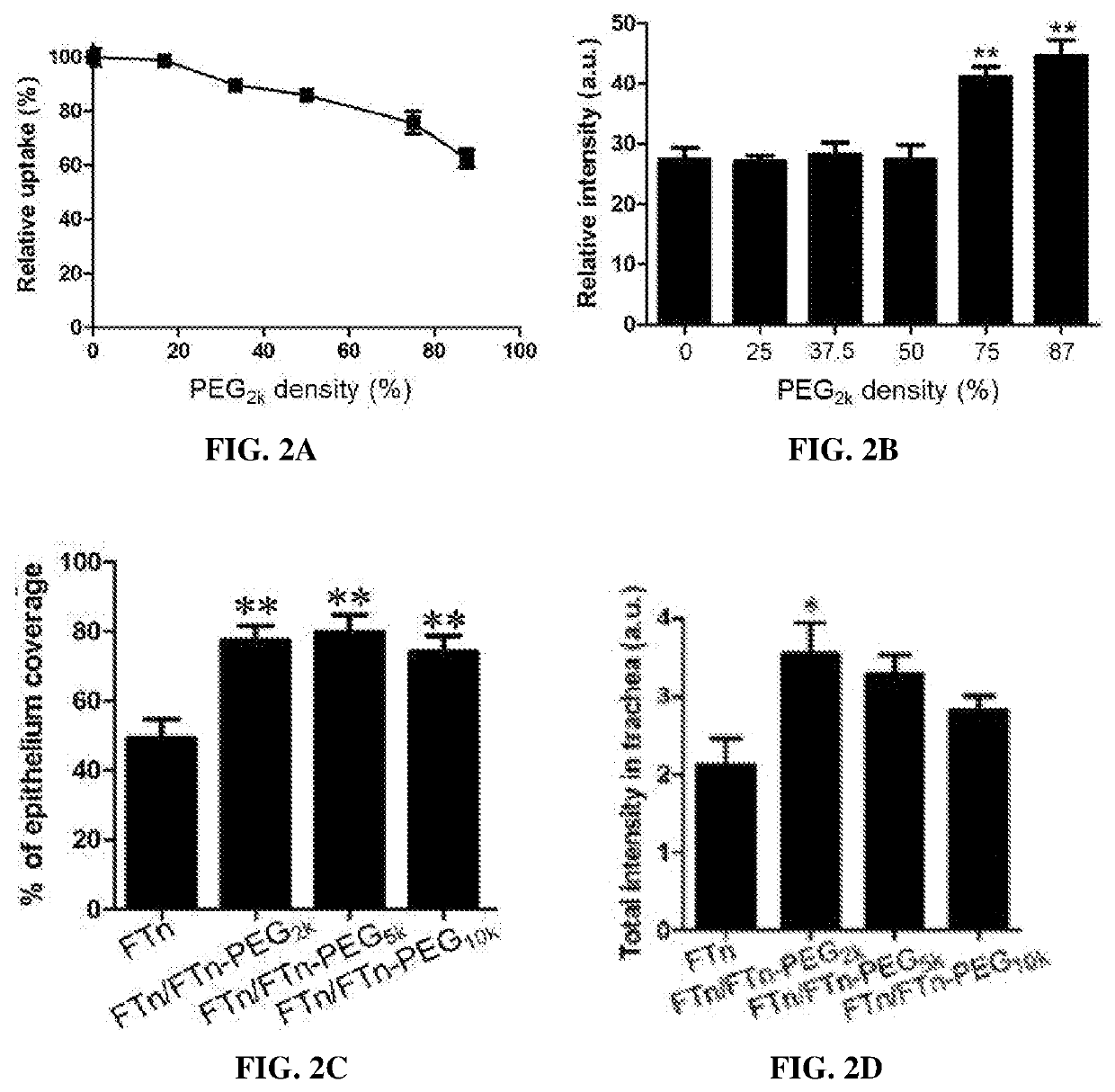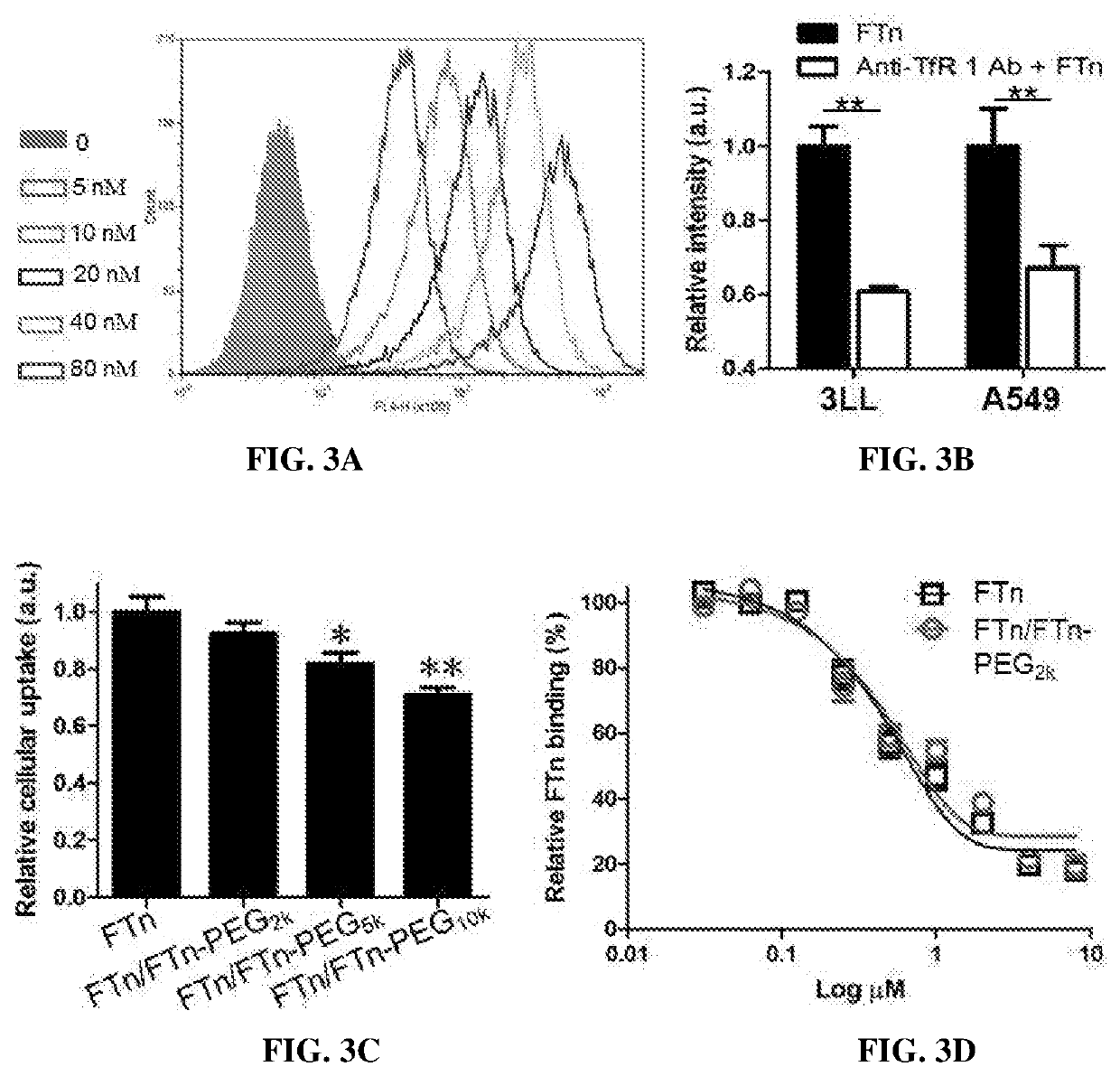Protein nanocages with enhanced mucus penetration for targeted tissue and intracellular delivery
a technology of protein nanocages and targeted tissue, which is applied in the direction of peptide/protein ingredients, drug compositions, microcapsules, etc., can solve the problems that the coating does not prevent the protein nanocages, and achieve the effect of efficient partitioning and enhanced anti-cancer
- Summary
- Abstract
- Description
- Claims
- Application Information
AI Technical Summary
Benefits of technology
Problems solved by technology
Method used
Image
Examples
example 1
n of Ferritin Nanocage (FTn) and Assembly of Hybrid FTn
[0167]Materials and Methods
[0168]Recombinant Human Ferritin Heavy Chain
[0169]A plasmid encoding human ferritin heavy chain was constructed by typical molecular cloning. Briefly, human cDNA was extracted from HCT116 human colon carcinoma cells. The gene encoding the human ferritin heavy chain was amplified by polymerase chain reaction (PCR) using a forward primer (5′-CGCCATATGACGACCGCGTCCACCTCG-3′, SEQ ID: 3) and a reverse primer (5′-CCGCTCGAGTTAGCTTTCATTATCACTGTCTCCCAGGGT-3′, SEQ ID: 4). The PCR product was subsequently cloned into pET-21a (+) plasmid using NdeI and XhoI as restriction sites and the resulting plasmid vector was transformed into E. coli BL 21. A 1 L culture of E. coli transformed with pET-21a (+) ferritin heavy chain plasmid was grown to an OD600 of ˜0.8 in LB medium containing 100 μg / mL ampicillin. The protein production was induced by 1 mM IPTG for 4 hours, and subsequently, the cells were collected by centrifu...
example 2
f PEGylation Density on Colloidal Stability, Tumor Cell Uptake, and Tumor Tissue Penetration
[0189]Materials and Methods
[0190]Polyethylene glycol (PEG; 2 kDa) polymers were conjugated to human native heavy chain ferritin nanocages (FTn) at 0.42 PEG / nm2 via an NHS-amine reaction, as described in Example 1. Non-PEGylated and PEGylated FTn were then disassembled at pH=2, followed by reassembly at pH=7 at 0, 25, 37.5, 50, 75, or 87.5% of PEGylated ferritin protein.
[0191]Nanocages reassembled in phosphate buffered saline (PBS) with varying % of PEGylated protein were analyzed by electrophoresis within a 0.5% agarose gel to determine any aggregation. For testing stability of FTn in human plasma, reassembled FTn products were incubated with 10% human plasma for 1 hour at 37° C. prior to electrophoresis.
[0192]The effects of PEG surface density on tumor cell uptake and tumor tissue penetration of FTn were studied using 3LL cell culture and three-dimensional (3D) tumor spheroid, respectively. ...
example 3
irway Distribution of PEGylated FTn
[0201]Materials and Methods
[0202]The airway distribution of Cy5-labeled FTn, with or without PEG surface coatings, was studied following intranasal administration in mice. All experiments were approved by the Institutional Animal Care and Use Committee.
[0203]Female CF-1 mice (6-8 week) were anesthetized under continuous flow of isoflurane (2% in oxygen). A 50 μL solution of Cy 5-labeled FTn (5 μM) without or with PEG modification was each administered to the lung of different mice via intranasal instillation. The administered included one of the four groups: (1) Cy 5-labeled FTn, (2) Cy 5-labeled FTn / FTn-PEG2k (PEG MW=2 kDa), (3) Cy 5-labeled FTn / FTn-PEG5k, and (4) Cy 5-labeled FTn / FTn-PEG10k. Ten minutes after administration, mice were sacrificed and the entire lungs (including trachea) were removed and frozen in Tissue-Tek optimal cutting temperature compound (Sakura Finetek). Tracheas were sectioned on a Leica Cryostat (Leica Biosystems) with a ...
PUM
| Property | Measurement | Unit |
|---|---|---|
| molecular weight | aaaaa | aaaaa |
| molecular weight | aaaaa | aaaaa |
| molecular weight | aaaaa | aaaaa |
Abstract
Description
Claims
Application Information
 Login to View More
Login to View More - R&D
- Intellectual Property
- Life Sciences
- Materials
- Tech Scout
- Unparalleled Data Quality
- Higher Quality Content
- 60% Fewer Hallucinations
Browse by: Latest US Patents, China's latest patents, Technical Efficacy Thesaurus, Application Domain, Technology Topic, Popular Technical Reports.
© 2025 PatSnap. All rights reserved.Legal|Privacy policy|Modern Slavery Act Transparency Statement|Sitemap|About US| Contact US: help@patsnap.com



